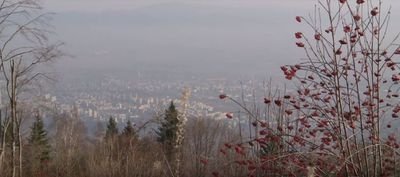ISSS608 2018-19 T1 Assign Goh I Vy
|
|
|
|
|
|
Спаси София ! Spasi Sofia! Save Sofia!
On Sunday, 7th January 2018, 08:32am, The Sofia Globe reported, “In Sofia’s Obelya residential district, the PM10 concentration was 632µg/m³ this morning, which is about 30 times the value which would lead to a pollution alarm in a country like Austria". It was reported that in spite of the fact there was not that much traffic, the air quality was bad on 6th January 2018. [1]
How are the resident of Sofia handling these environment condition in Sofia? One Sofia resident who manages the NGO Spasi Sofia, was spotted with a Hannibal Lecter breathing mask. “I also ordered an air filtration apparatus for home and another for the car. I guess I am supposed to live like fish in an aquarium now, so that I can breathe normally.” said Iliev.
What is going on in Sofia?
Background
According to Unmask My City, an organization who are dedicated to improving the health of patients and communities, Sofia’s air pollution level remainds one of the highest in European cities. 97.2% of Bulgarians are exposed to harmful levels of particulate matter PM10 throughout the year. Air pollution is now responsible for over 6.5 million premature deaths per year. Exposing people to harmful levels of air pollution increases the risks of heart disease, lung cancer, respiratory diseases and stroke.
What is Particulate Matter?
Particulate Matter are throasic and respirable particles, inhalable coarse particles. There are two categories of particle size. PM10 are coarse particles with a diameter between 2.5 and 10µm, PM2.5 are fine particles with a diameter of 2.5µm or less.
These particles are released from variety of sources, both indoor and outdoor. PM10 source could be soot, dust, pollen, mould etc. PM10 are inhalable. PM2.5 source could be combustion particles, organic compounds, metal, etc. PM2.5are respirable. Inhalable particulate fraction is that fraction of a dust cloud that can be breathed into the nose or mouth. Respirable particulate fraction is that fraction of inhaled airborne particles that can penetrate beyond the terminal bronchioles into the gas-exchange region of the lungs. [2]
Data Preparation
Four major sets of data were provided.
| Data Set | Data Preparation |
|---|---|
| Official Air Quality Measurements |
|
| Citizen Science Air Quality Measurement |
|
| Metrological Measurement |
|
| Topography Data |
|
Visualisation Software
The following software was used for data preparation and data visualization and analysis:
- Tableau
Banner image credit to: AFP News Agency

